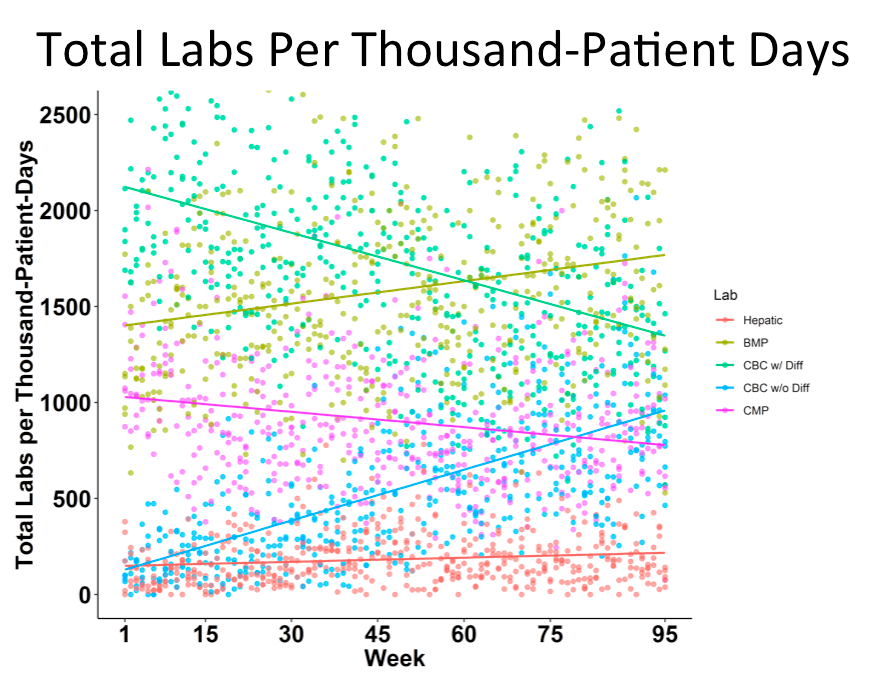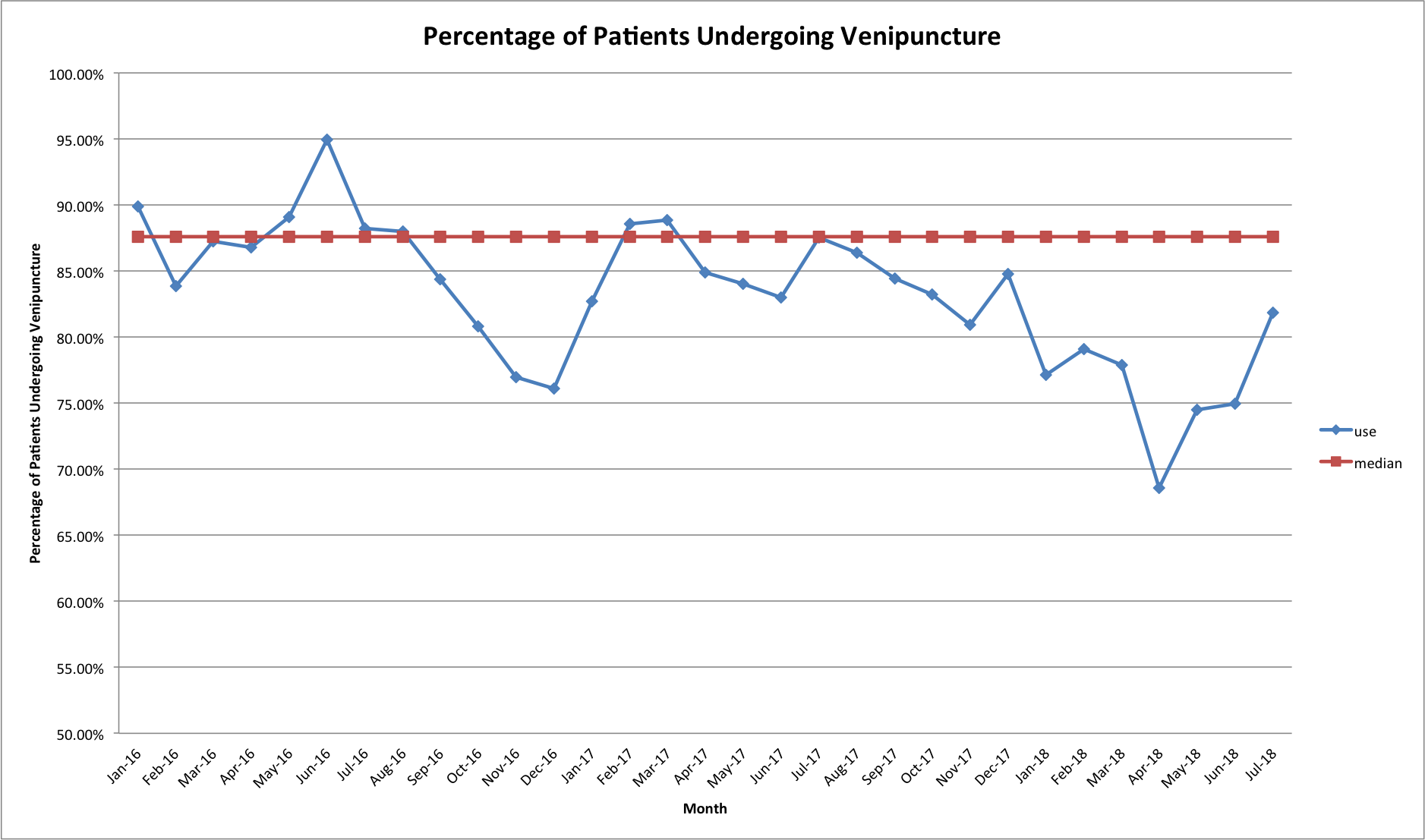Background: The United States is in the midst of a health quality crisis; for this to resolve, we must transform to a high-value, low-cost healthcare culture. To achieve such a culture, trainees must learn high-value care habits. We developed a 95-week longitudinal study to promote mindful laboratory habits in an internal medicine residency program.
Purpose: Subjects were internal medicine residents and attending physicians rotating on the general medicine inpatient service. The primary aim of the study was to decrease total laboratory orders (BMP, CMP, CBC with and without differentials) by 15% within one academic year and to sustain these changes. Total duration was 95 weeks; 15 weeks of control and 80 weeks of interventions (divided into five 16-week phases). Each intervention built on the previous. Phase 1: resident education, phase 2:electronic medical record (Epic) changes, phase 3: interactive cases, phase 4: attending physician education, phase 5: night-float resident education and additional EMR changes. Aggregate order data was obtained from the EMR and culture change was assessed with pre/post surveys. The primary outcomes were the total labs ordered, the type of laboratory panel ordered, resident attitudes of mindful laboratory ordering and money saved. Secondary outcomes included assessing trends of the length of stay, 30-day readmission rate, case-mix index and to phlebotomy utilization during the project.
Description: Survey data revealed increased resident perception of mindful lab ordering from 40% (32 weeks) to 85% (80 weeks)(statistically significant, p<0.05). Additionally, 85% of residents reported team discussion of laboratory ordering, which increased from 25% initially (p<0.05). 100% of attending physicians noted a decreased in laboratory orders on the resident teams at 95 weeks. EMR lab frequency utilization data demonstrated a 50% decrease in use of the “daily” frequency and a 50% increase of “one-time” ordering option. By week 45, there was a 20% decrease in total labs ordered/week; this was sustained through week 95. Figure 1 shows the number of labs ordered per 1000-patient days. Both BMP and CBC without differentials increased while CMP and CBC with differential decreased. Hepatic panels, a balancing measure did not significantly change.
Secondary outcomes demonstrated a downtrend in 30-day readmission rate (1.18 to 0.92) and length-of-stay (LOS) (1.02 to 1.0) and uptrend incase-mix index (CMI) (1.37 to 1.83). The percentage of patients on medicine service undergoing venipuncture was also decreased (Figure 2).
Conclusions: We believe we have created and sustained a cultural change toward more mindful laboratory ordering. Residents not only perceive that they are more mindful, they have actually decreased the number of labs ordered. While we cannot attribute the downtrend in LOS and readmissions to our study, we can state that decreasing labs did NOT result in an increased LOS or readmission rate. We also know that our decrease in laboratory orders is not secondary to lower acuity patients. The downstream benefit of this culture change is exemplified by the decrease in patients undergoing venipuncture. We initiated a grassroots movement in our program that has incited a sustainable high-value care culture through multi-faceted interventions such that our trainees can continue to propel this in their own future practices.


